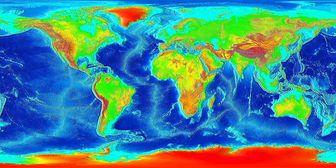Continental shelf

Facts about Continental shelf
The Continental Shelf offers a variety of charters to accommodate you!
FULL DAY FISHING
Approximately 40 miles offshore. Grouper, Red Snapper, Sea Bass,
Dolphin, Kings & Others.
The global continental shelf, highlighted in cyan
The continental shelf is the extended perimeter of each continent and
associated coastal plain, and was part of the continent during the
glacial periods, but is undersea during interglacial periods such as
the current epoch by
The UN Convention on the Continental Shelf of 1958 granted stated the
right to mineral exploitation up to a depth of 200 m in their coastal
waters, together with permission to authorize the construction of
drilling rigs and the like, although such structures were not to be
(Contract law)██ Continental shelf areas of the world, highlighted in cyan.
██ Continental shelf areas of the world, highlighted in cyan.
Extended Continental Shelf Project is to
establish the full extent of the continental shelf of the United
States, consistent with international law.
Submission preparation session: continental shelf delineation for
southwest Pacific Island States (RECENTLY HELD EVENT)The UNEP Shelf
Programme, in conjunction with our partners in the Pacific,
Geosciences Australia and Pacific Islands Applied Geoscience
Commission (SOPAC), held a work session at the University of Sydney
Outer Continental Shelf consists of the submerged lands,
subsoil, and seabed in a specified zone up to 200 nautical miles or
more offshore from U.S. coasts.
A continental shelf is the part of the continent that is under water.
The shelf was part of the land during the ice ages in the glacial
periods, but under water in the interglacial periods. We are at
present in an interglacial period.
The continental shelf is an undersea extension of a continent which
can stretch for many miles out to sea in some cases.
The continental shelf is a shallow, near horizontal seafloor extension
from the shoreline to the upper continental slope. This shelf forms
the shallow margin of each deep-ocean basin.
The continental shelf is the gently dipping submerged margin of the
continent that extends from the nearshore to the shelf break. Beyond
the break (at a depth of approximately 200 meters, or 650 feet), the
slope descends more steeply to the ocean floor.
the outer continental shelf, with shelf depths of approximately 70 to
80 meters along the eastern, nearshore boundary. Landward of the
sanctuary are shelf areas shallower than 30 meters that are contained
with the Gulf of the Farallones National Marine Sanctuary.
The continental shelf regions also contain the highest amount of
benthic life (plants and animals that live on the ocean floor).
Diagram of continental shelf, slope & rise
The continental slope connects the continental shelf and the oceanic
crust.
* Facts about continental shelf, as discussed in Quaternary:
Economic significance of Quaternary deposits:
* Facts about continental shelf, as discussed in Quaternary:
Glaciation:
* Facts about continental shelf, as discussed
The continental shelf is the extended perimeter of each continent,
which is covered during interglacial periods such as the current epoch
by relatively shallow seas (known as shelf seas) and gulfs. The shelf
usually ends at a point of increasing slope (called the shelf break).
Continental Shelf Research on ScienceDirect(Opens new window)
ISSN: 0278-4343
Imprint: ELSEVIER
Actions
* Submit Article
* Order Journal
* Free Sample Issue
continental shelf The part of the edge of a continent between the
shoreline and the continental slope. It is covered by shallow ocean
waters and has a very gentle slope.
ThesaurusLegend: Synonyms Related Words Antonyms
Noun
1.
